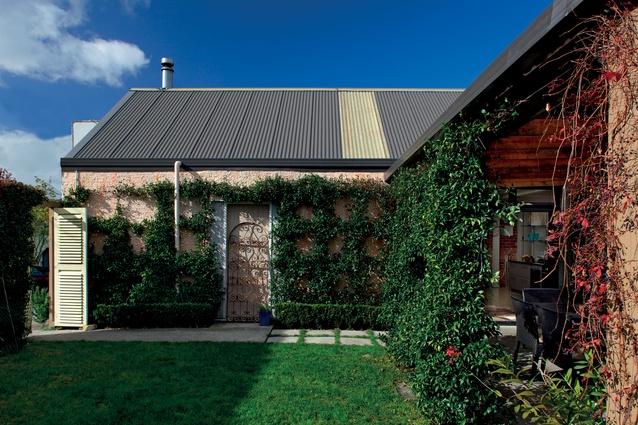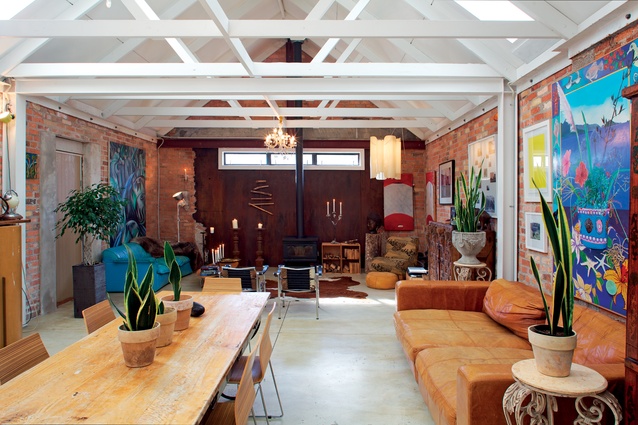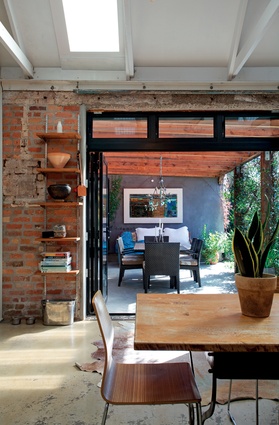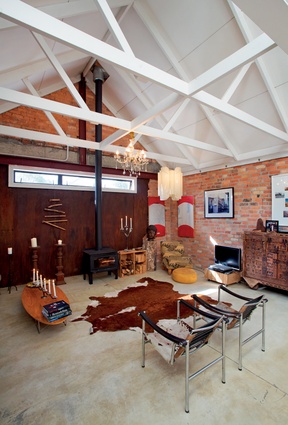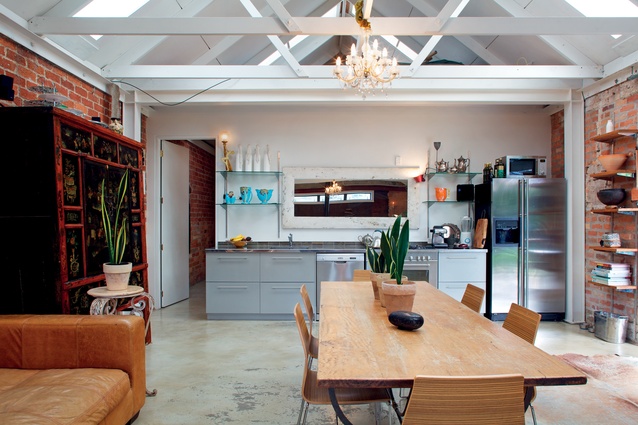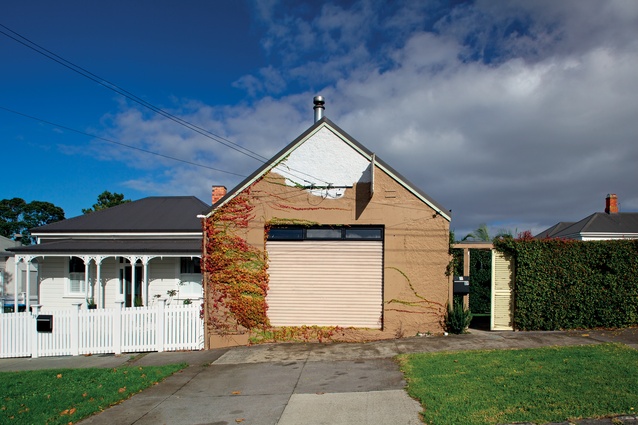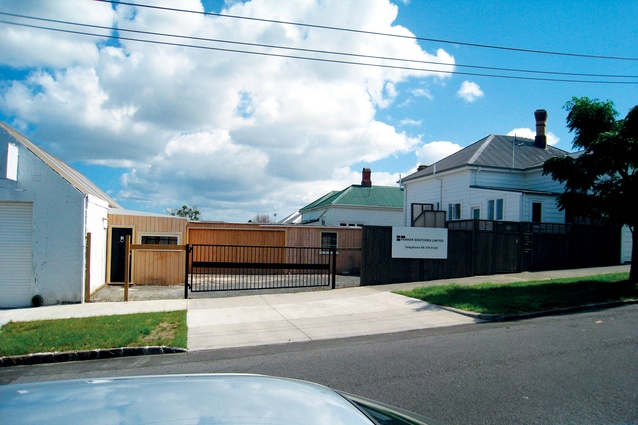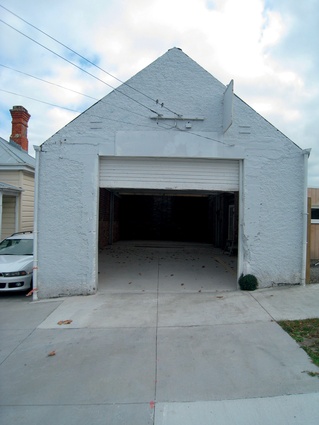Houses revisited: Grey Lynn garage
A former inner city mechanic’s workshop is reimagined as a New York-style loft, first published 2015.
It took vision – and perhaps a dash of desperation – to see the potential for what was previously a dilapidated mechanic’s workshop in Grey Lynn to become what you see in these images, a vibrant New York loft-style abode. Before purchasing the building in 2009, the homeowners, Gerard Fitzgibbon and Jude Mitchell, had sold their apartment and were suffering sleepless nights trying to find somewhere to live in central Auckland in the middle of a global financial crisis. It was on one of these sleepless nights that they came across, in Gerard’s words, ‘this hideous blue building’.
“I said, I think I’ve found it! One bedroom, one bathroom, Grey Lynn – was how the agents described it. We took possession April, and by Christmas we were hosting thirty people for lunch,” says Gerard.
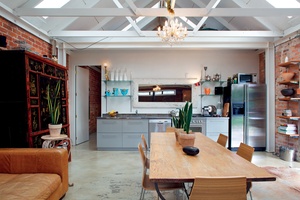
Converting the building into a home took a good deal of effort from architect Mark Smith, who worked alongside the owners to convince council to allow the building’s use rights to change from commercial to residential. It was already in a residential zone, but they had to show that the existing dwelling could comply with the building code, says Smith.
“We needed to show it was waterproof and warm. We replaced the ceiling and insulated it. The floor slab was replaced with a new polished and paint-washed concrete slab, which brought the floor higher than the footpath, whereas it had a drive up ramp access previously. The homeowners didn’t want to hide the old brickwork, so we didn’t line the walls, but the building stays very warm through thermal mass. The bricks, which I believe are from the original Avondale brickworks, were strengthened to building code with an expressed internal steel frame and water blasted to remove any industrial residue.”
The conversion was not always an easy task. As layers of the building were removed, there were a few surprises lurking. One section of flooring, which looked level to the eye, was found to travel in three separate directions from a corner. On day one of construction, a dilapidated lintel was discovered above the roller door, having been previously boxed in and hidden. The roller door was removed and a timber framed wall created in its place, with clerestory windows above to let in light. Transparent panels were also added to the roof to allow more light into the main space.
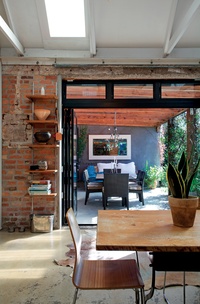
In terms of the interior design, the couple were enthusiastic about retaining the warehouse look, using the large open space as an open-plan living area and leaving the brickwork and trusses exposed. The master bedroom and ensuite occupy the rear of the main space. With an eye for design, Jude chose fittings to suit the loft aesthetic, such as industrial-style shower fittings and stainless steel kitchen appliances and benchtops. It is furnished with an eclectic collection of furniture from the couple’s previous homes as well as more recent collections and purchases.
“This type of home needs to be treated with love. We weren’t looking for a classic villa or a modern home so we were never going to remove the history and character of the place,” says Gerard.
The other three bedrooms, second lounge and bathroom were created in existing wooden buildings, which had been added sometime in the building’s past. This area challenged the original concepts and the existing structure was demolished, but fortunately part of the rear brick wall was able to be retained as a feature wall in the second lounge. The family bedroom wing shares a wall with the main building and can be accessed via a covered courtyard, which is a new addition.

